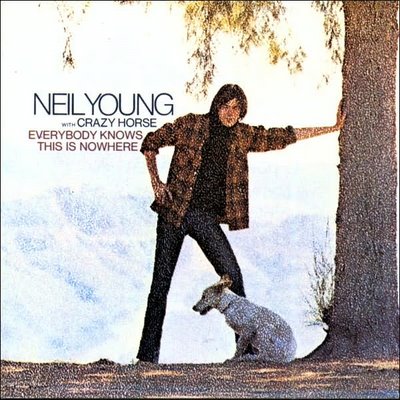Rory Gallagher is an Irish blues guitarist not very many people have heard of, but if you have, you know you can put him up on the same level as greats such as Jimi Hendrix, Eric Clapton, and Stevie Ray Vaughan. Rory was an exceptionally talented blues guitarist from the 1960's up until his untimely demise in the mid-1990's. I'm still trying to find out if there is a relation between us since my mother's maiden name is Gallagher, and Rory's dad would be roughly the same age as my great grandpa. Not only that, but they are from the same town in Ireland as well. Anyways, here is Rory's best known album, Irish Tour 74'.
The album starts out with one of my all time favorite songs, "Cradle Rock." It starts out with an intense riff that flies all over the E pentatonic scale. A very complex song that is widely covered incorrectly, and very difficult to play. The drummer (not named) rips with fills flying all over in the right places, with a jazzy influence similar to that of Bill Ward from Black Sabbath. Another thing that should be noted is the keyboard player is good enough to put the likes of Steve Winwood to shame. After the song continues for a bit, Rory flies into a very, very complex guitar solo in standard tuning, almost un-heard of. It's safe to say his slide playing could put Duane Allman to shame.
The next song "I Wonder Who" starts out with an "imaginary" blues shuffle that Rory plays in his head while his guitar solos over the entire thing. One thing I can really compare this particular song to is "electric" delta blues, to the likes of John Lee Hooker and Son House. After a bit of that, he goes into a very Freddie King like jam session, full of interesting chords and licks.
Another great song on this album would be "Too much alcohol." It starts off with an obscure little jam that doesn't make much sense in the rest of the song. Soon after the band evaporates, Rory goes into a nice blues shuffle, and tells the story of how he was trying to go sober when he was playing at a bar. The story progresses, and he precedes to tell you how he had a jug that he was supposed to fill with water and drink from, but when he went the man filled the jug with alcohol. The reason for this is because Rory is a high paying customer and he's trying to get him hooked again. That's Ireland for you.
"As The Crow Flies" is one of Mr. Gallagher's famed blues/folk songs he used to do. This song shows his diversity in taste of music. It shows how one minute he can go from a blistering insane guitar jam, to a nice slow and fast acoustic jam. The crowd really gets into the song as they scream and clap along to the beat of the song. Rory sings EXACTLY like a white Hendrix. He just replaces Jimi's "black talking" with his own "irish talking" and by doing this shows how un-complicating that kind of singing style is. Also midway through, he shows his Neil Young side by playing the harp while he strums his guitar fiercely.
The next song on this Irish Blues master piece would be "A Million Miles Away." Rory tells the story I know all too well, about playing in a bar late at night, and how people are all still barely awake while they hold onto their bar stools with a drunken gaze on their faces, and how throughout the set of the night, they slowly start disappearing out the door. But no matter what is going on around him, he feels that he is a million miles away playing his guitar for the greatest people alive instead of some of the lowest. The lyrics are very soulful, and sad at the same time. It tells the story all too well that many failed musicians stuck in night clubs could tell you.
"Walk On Hot Coals" is the perfect upswing from the sad song previously played on this record. The song starts out with a jam session Jack Bruce, Ginger Baker, and Eric Clapton would be most definitely proud of. Back in the 60's Rory played a few shows with the super group "Cream" and definitely picked up some things from them. Standing in at a blistering 11 minutes, the drums are pounding, the bass player is having a heart attack, and Rory is about to burst.
The beloved Rory Gallagher statue in his home town of Cork
R.I.P














